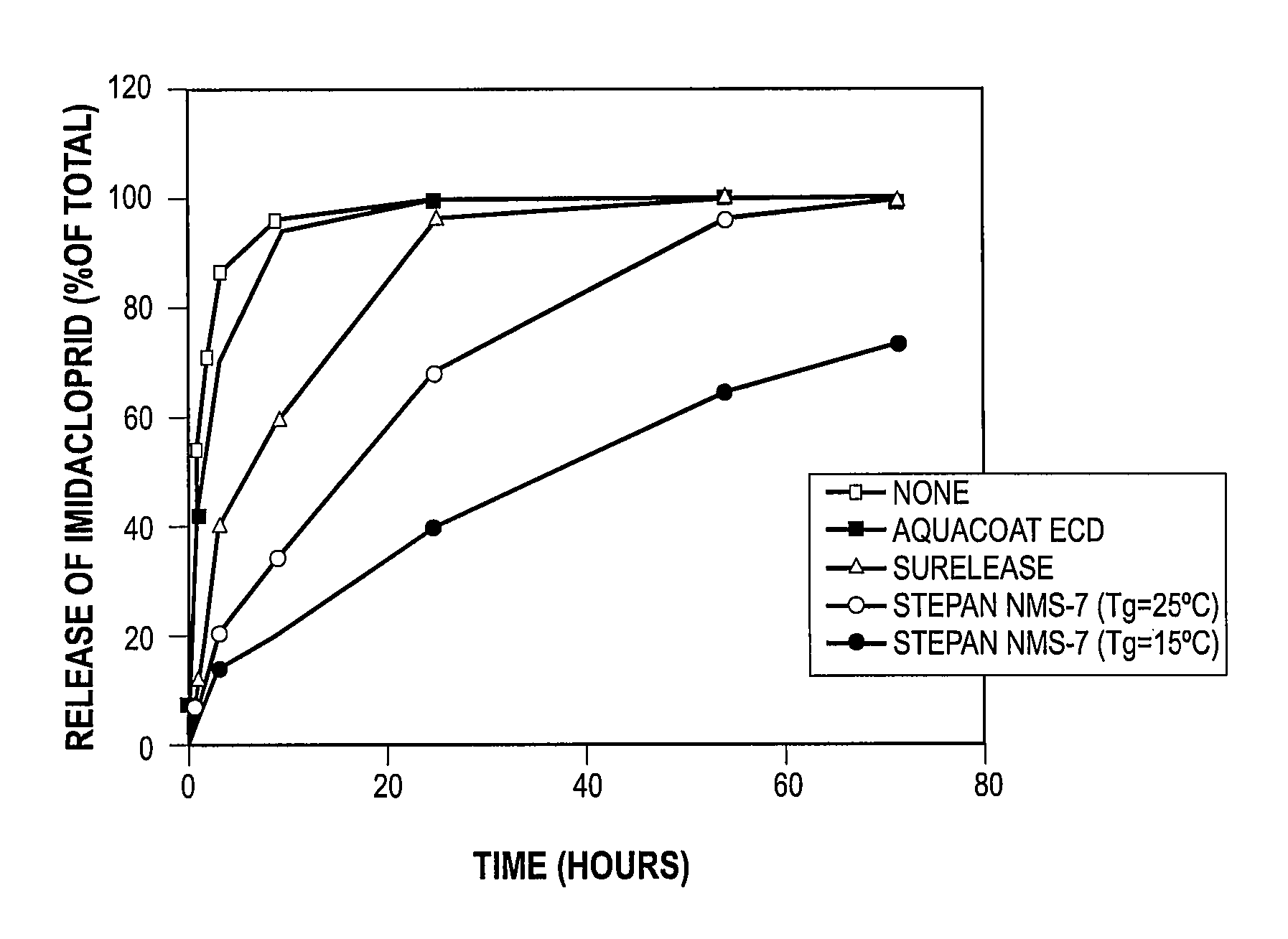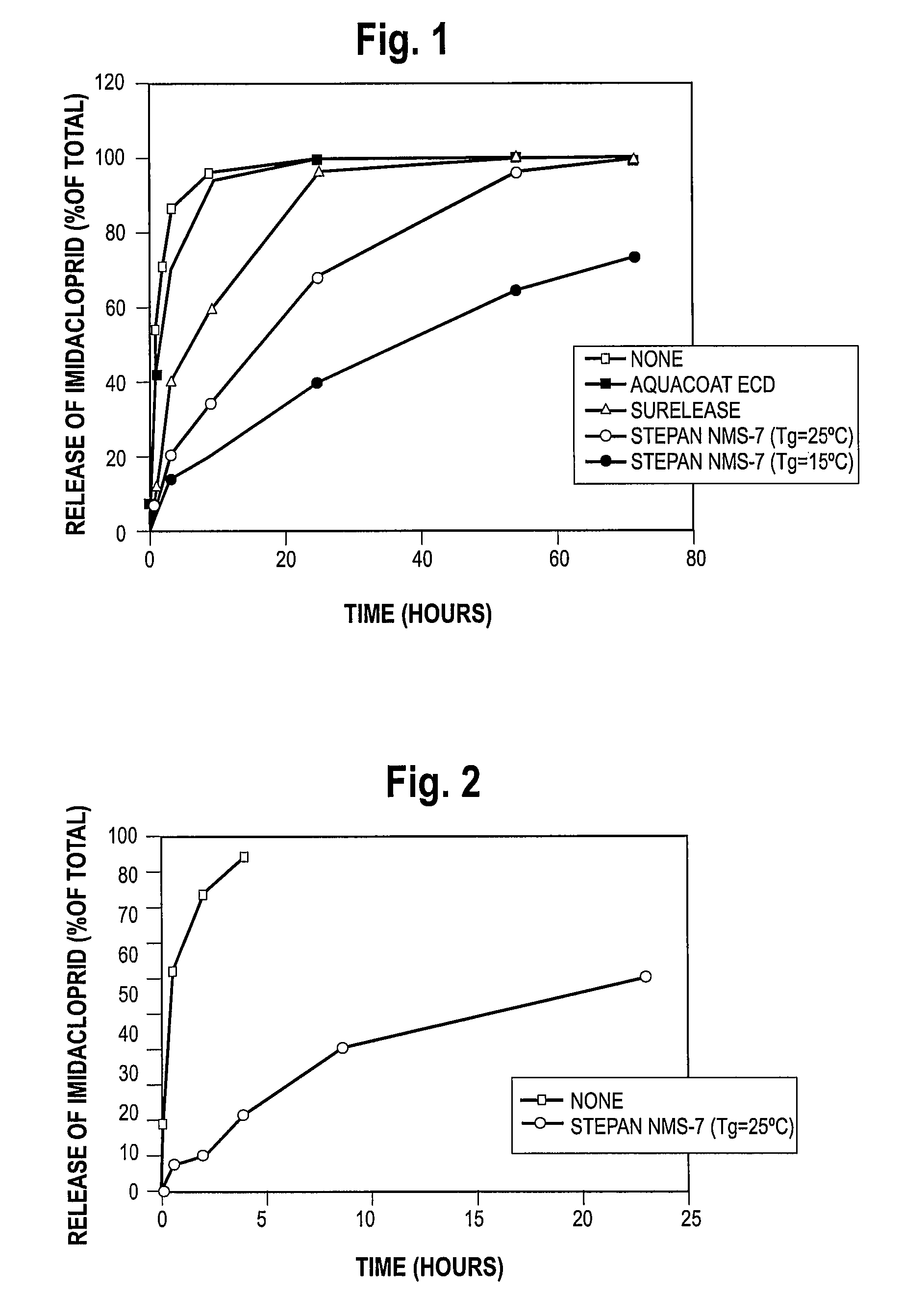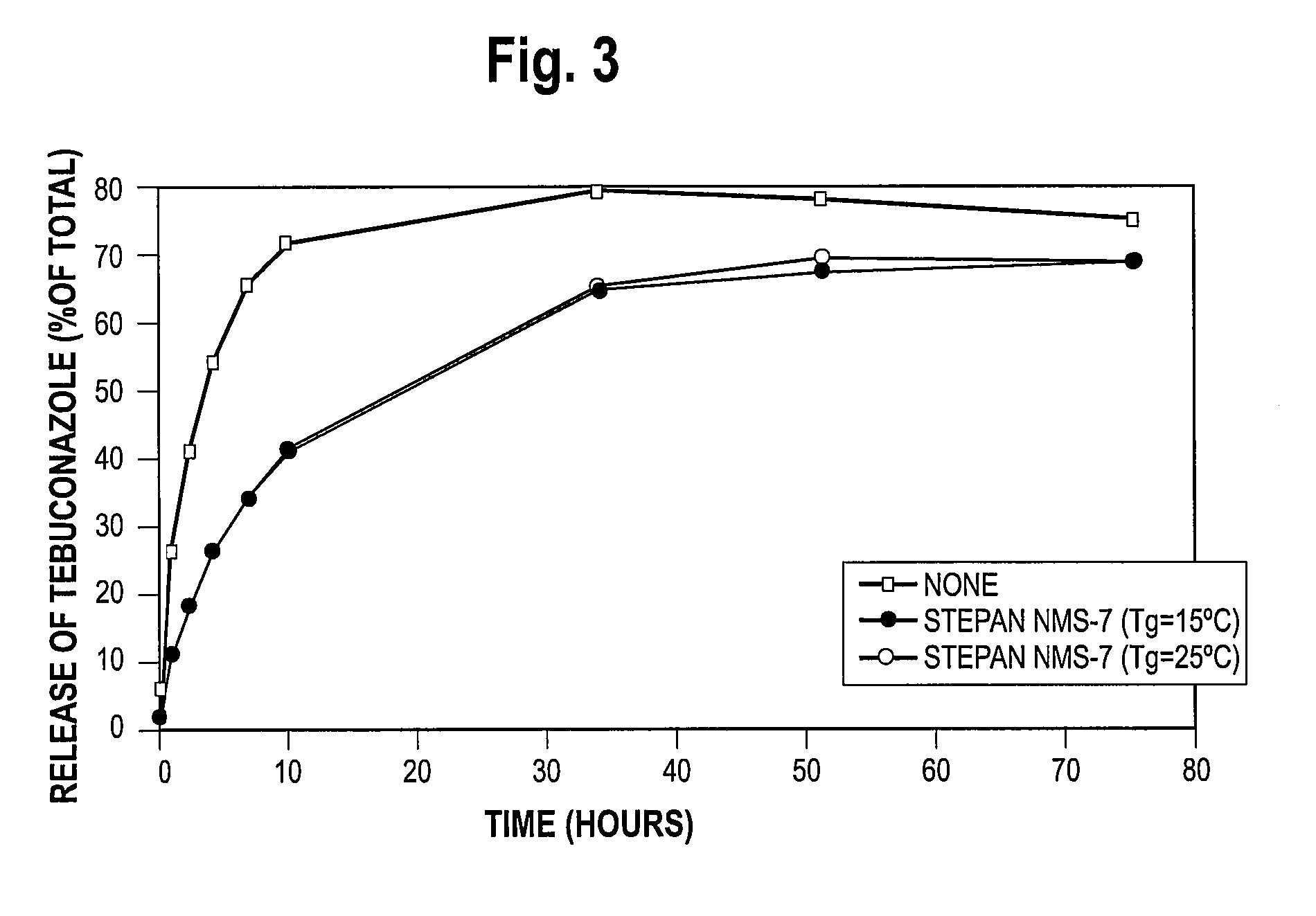Method of controlling the release of agricultural active ingredients from treated plant seeds
a technology of agricultural active ingredients and plant seeds, which is applied in the directions of biocide, seed and root treatment, and dead animal preservation, etc., can solve the problems of high pesticide loss rate during storage, high exposure of workers handling and planting seeds to high levels of pesticides, and the spread of pesticide use is not without problems. , to achieve the effect of convenient, fast and economical administration
- Summary
- Abstract
- Description
- Claims
- Application Information
AI Technical Summary
Benefits of technology
Problems solved by technology
Method used
Image
Examples
example 1
[0077]This illustrates the treatment of corn seed with imidacloprid.
[0078]A coating suspension was prepared by mixing water (133.6 g) at room temperature, with Vinamul 18132 (8.4 g, available from Vinamul Limited Inc.), Seedkare Luster Kote.Plus Red (7.03 g, available from Sub-Sahara Co.), and imidacloprid (2.47 g, available from the Gustafson Company). Prior to preparing the suspension, the size of the imidacloprid particles was reduced from over 100 microns to a nominal average size of approximately 1-2 microns. The size reduction can be carried out by milling for a time sufficient to produce imidacloprid particles having a nominal size of below about 1-2 microns.
[0079]The ingredients were then mixed together and the mixture was stirred with a mechanical stirrer at medium speed at room temperature for 20 minutes. At this time the coating suspension was ready for application to the seed.
[0080]Corn seed (908.21 g, Asgrow RX601, Lot LF OZ34982, available from Asgrow Seed Company, L.L...
example 2
[0081]This illustrates the treatment of corn seed with imidacloprid and subsequent coating with a polymer latex having a glass transition temperature of 15° C.
[0082]Corn seed (908.13 g) was treated with a coating suspension that contained water (133.6 g), imidacloprid (2.48 g; milled as described in Example 1), Vinamul 18132 (8.39 g), and Seedkare Lusterkote Plus Red (7.03 g). The coating suspension was prepared and applied to corn seed as described in Comparative Example 1, except that the time to apply the suspension was about 8 minutes.
[0083]After the coating suspension had been applied to the corn seed, and while the treated seed was still in the drum of the CMS machine, an aqueous emulsion of a polymer latex was applied to the seed. The polymer latex emulsion was prepared by mixing water (38.1 g) at room temperature, with polymer latex (11.7 g, NMS-7 polymer latex having a solids content of 45.8% by weight; and having a glass transition temperature (Tg) of 15° C., available fro...
example 3
[0084]This illustrates the treatment of corn seed with imidacloprid and subsequent coating with a polymer latex having a glass transition temperature of 25° C.
[0085]Corn seed (908.24 g) was treated with a coating suspension that contained water (133.6 g), imidacloprid (2.47 g), Vinamul 18132 (8.39 g), and Seedkare Lusterkote Plus Red (7.02 g). The coating suspension was prepared and applied to corn seed as described in Example 2.
[0086]After the coating suspension had been applied to the corn seed, an aqueous emulsion of a polymer latex was applied to the seed as described in Example 2. The polymer latex emulsion was prepared by mixing water (33.1 g) at room temperature, with polymer latex (12.7 g, NMS-7 polymer latex having a solids content of 39.6% by weight; and having a glass transition temperature (Tg) of 25° C., available from the Stepan Company, Northfield, Ill.). The conditions for the CMS Treater during the overcoating process were the same as in Example 2, and the time to a...
PUM
 Login to View More
Login to View More Abstract
Description
Claims
Application Information
 Login to View More
Login to View More - R&D
- Intellectual Property
- Life Sciences
- Materials
- Tech Scout
- Unparalleled Data Quality
- Higher Quality Content
- 60% Fewer Hallucinations
Browse by: Latest US Patents, China's latest patents, Technical Efficacy Thesaurus, Application Domain, Technology Topic, Popular Technical Reports.
© 2025 PatSnap. All rights reserved.Legal|Privacy policy|Modern Slavery Act Transparency Statement|Sitemap|About US| Contact US: help@patsnap.com



